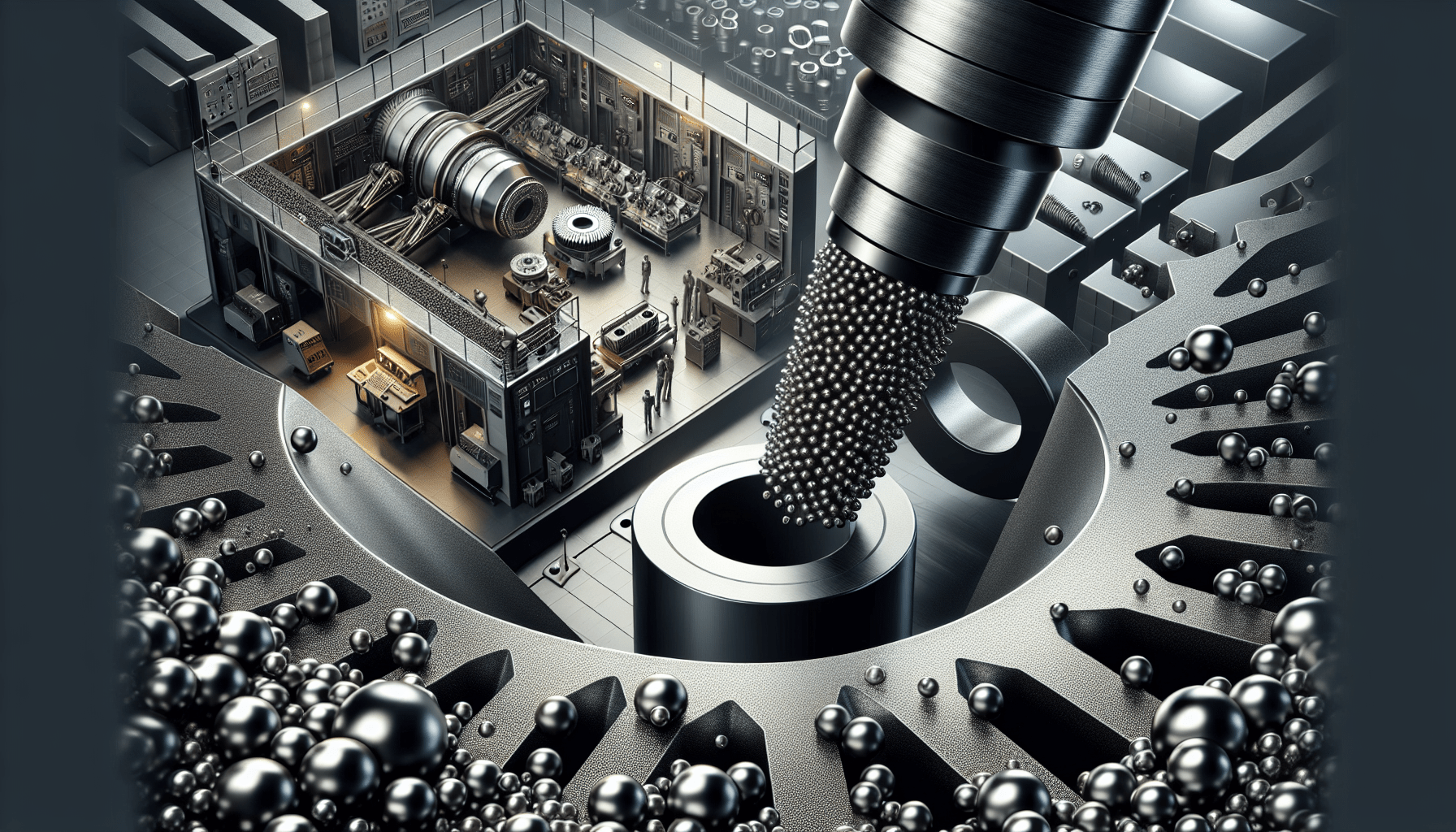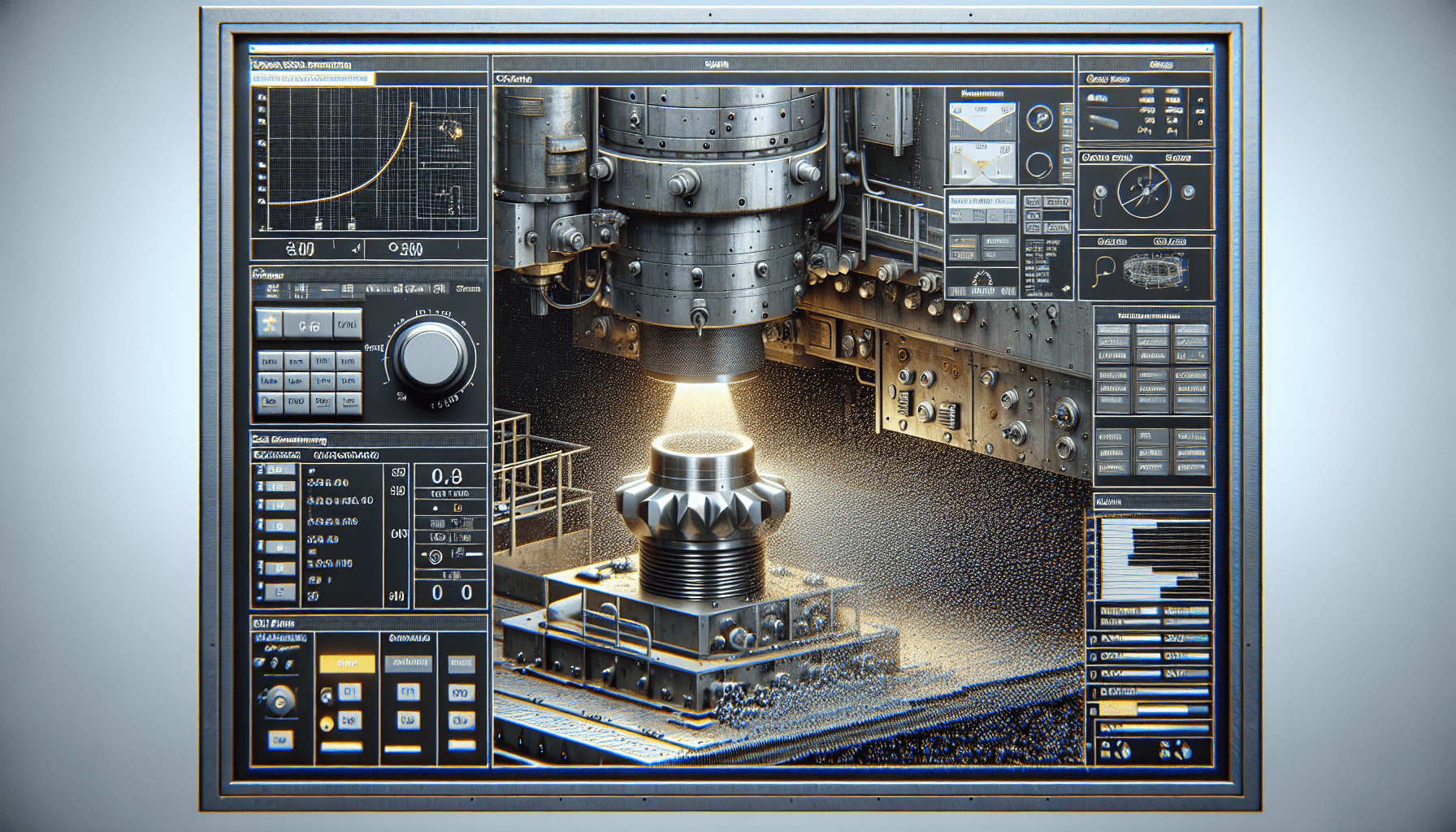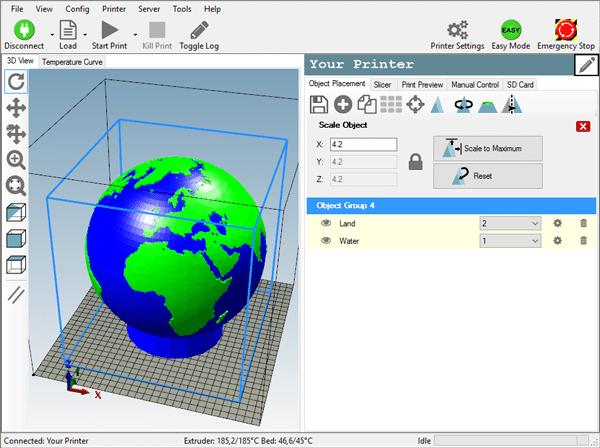Anycubic Kobra S1 Combo 3D Printer, 4 Stunning Multicolor with Anycubic ACE PRO, 600mm/s High Speed and 320℃ Hotend Free-Clog Extruder, Intelligent Drying While Printing, Built-in Camera 250*250*250mm
$599.99 (as of June 19, 2025 23:45 GMT +00:00 - More infoProduct prices and availability are accurate as of the date/time indicated and are subject to change. Any price and availability information displayed on [relevant Amazon Site(s), as applicable] at the time of purchase will apply to the purchase of this product.)In the world of additive manufacturing, fatigue performance is a critical factor to consider, especially for aluminum alloy parts. These parts often suffer from poor fatigue properties compared to other structural metals. To address this issue, engineers have turned to shot peening, a surface treatment technique that involves bombarding a component with small, high-velocity spherical shots. However, the mechanism behind how shot peening enhances fatigue strength has remained poorly understood until now. Recently, a group of Italian engineers conducted a comprehensive study to systematically compare the effects of different shot peening parameters on fatigue behavior. Through a combination of experiments, fractographic inspections, and fatigue calculation models, they identified key findings that shed light on how to optimize shot peening parameters for enhanced fatigue performance.
Key Findings from Research
Surface Roughness and Microhardness
In their research, the Italian engineers investigated the effect of different shot peening treatments on surface roughness and microhardness. They found that peening treatments increased surface roughness, and there was a discernible trend based on shot size. Additionally, they observed variations in microhardness profiles, with different treatments yielding slight differences in surface layer hardness.
Surface Roughness Influence
The researchers also examined the significance of surface roughness on fatigue strength. They discovered that surface roughness had a significant impact on fatigue strength, and they identified a linear relationship between the two variables. This finding emphasizes the importance of controlling surface roughness when enhancing the fatigue performance of materials.

$30 off $400+ Anycubic Products with code AC30OFF
Residual Stress and Strain Profiles
Residual stress and strain are crucial factors in determining the fatigue behavior of materials. The engineers investigated how shot peening treatments influenced residual stresses and strains. They found that these factors depended on the shot size, with larger shots inducing higher values. Moreover, they observed variations in the peening depth and the presence of compressive residual stress peaks at different depths.
Fatigue Crack Initiation
The research team conducted fractographic analysis to study fatigue crack initiation. They analyzed the differences in initiation depth based on the shot size used in the peening treatments. Their findings revealed that treatments using smaller shots exhibited shallow initiation, while treatments with larger shots had deeper initiation. This discovery provides insight into the mechanisms behind fatigue crack initiation and highlights the role of shot peening parameters in mitigating this phenomenon.

Optimal Peening Depth
One key finding from the research is the relation between peening depth and fatigue strength enhancement. The engineers discovered that shot peening treatments resulting in an in-depth residual compressive stress profile near the surface were more effective in improving fatigue strength. However, they cautioned against overpeening at high coverage, as it led to attenuation of near-surface compressive residual stress and did not result in further fatigue strength enhancement. This finding highlights the importance of finding the optimal peening depth to maximize the benefits of shot peening.
Introduction
The fatigue performance of materials is of great importance in various engineering applications. Fatigue failure can occur when a material undergoes repeated loading and unloading cycles, leading to the initiation and propagation of cracks. To enhance the fatigue performance of materials, various surface treatments have been developed, and one such treatment is shot peening. Shot peening involves bombarding a component with small, high-velocity spherical shots to induce compressive residual stresses and improve the material’s fatigue strength.
Background of Shot Peening
Shot peening has been widely used in industries such as aerospace, automotive, and manufacturing to improve the fatigue performance of materials. The process involves firing small metal shots at high velocities onto the surface of a component, inducing compressive residual stresses and strain hardening. Shot peening can mitigate the effects of surface defects, improve the surface finish, and enhance the overall fatigue strength of a material.
Importance of Enhancing Fatigue Performance
The fatigue performance of materials is crucial in determining the reliability and longevity of engineering components. Fatigue failure can lead to catastrophic consequences, particularly in critical applications such as aircraft structures or medical implants. By optimizing shot peening parameters, engineers can enhance the fatigue performance of materials, resulting in safer and more durable products. Understanding the influence of shot peening on surface roughness, microhardness, residual stress and strain profiles, fatigue crack initiation, and optimal peening depth is essential for maximizing the benefits of this treatment.
Methodology and Experimental Approach
To investigate the effects of shot peening parameters on fatigue behavior, the Italian engineers conducted a series of experiments, fractographic inspections, and fatigue calculation models. They used different shot sizes and peening depths to evaluate their impact on surface roughness, microhardness, residual stress and strain profiles, fatigue crack initiation, and fatigue strength enhancement. The researchers systematically analyzed the results to identify trends, relationships, and optimal parameters for enhancing fatigue performance through shot peening.
In conclusion, the research conducted by the Italian engineers sheds light on the effects of shot peening parameters on fatigue behavior. Their findings highlight the influence of surface roughness on fatigue strength and emphasize the importance of controlling surface morphology during the peening process. Additionally, they provide insights into the relationship between shot size, peening depth, residual stress and strain profiles, and fatigue crack initiation. These findings contribute to the optimization of shot peening parameters to enhance the fatigue performance of materials, ultimately leading to safer and more durable engineering components.
Buy Photon Mono M5 Get Free 1KG Resin







